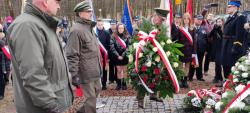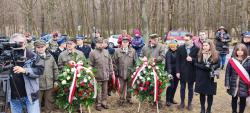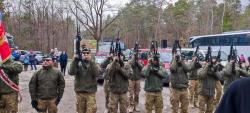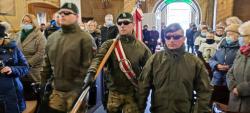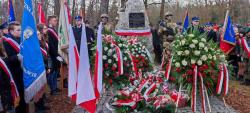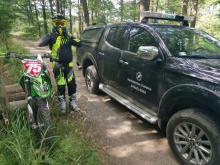 Asset Publisher
Asset Publisher
Polish forests
Poland is in the European lead, while concerning the area of all forests. They cover about 29,2 % of the country territory, and grow within the area of 9,1 million hectares. The overwhelming majority of the forests is state owned, of which almost 7,6 million hectares are managed by the State Forests National Forest Holding..
The number of Polish forest is still growing. The forestation rate of the country has increased from 21 % in 1945 to 29,2 % at the moment. Between 1995 and 2008, the forest area increased by 310 thousand ha. The basis for afforestation works is the "National Programme for Increasing the Forest Cover" (KPZL), assuming an increase of the forestation rate up to 30 % by 2020 and up to 33 % by 2050. Polish forests abound in flora, fauna and fungi. 65 % of the total number of animal species live there.
The forests grow in our country on poor soils, mainly because of the development of the agriculture in previous years. It influences the distribution of the types of the forest sites in Poland. Over 55 % of the forest areas is covered with coniferous forests. In other areas, there are forest sites, mainly the mixed ones. Their small part constitute alder and riparian forests – not more than 3 %.
In the years 1945 – 2011 the area of natural deciduous tree stands within the area of the State Forests National Forest Holding increased from 13 to 28,2 %.
Within the lowlands and uplands the most often occurring tee species is pine. It covers 64,3 % of the forest area of the State Forests National Forest Holding and 57,7 % of private and commune forests. In the mountains the predominant species is European spruce ( in the west) and European spruce with beech (in the east). Domination of pine is the result of carrying on sustainable forest management in the past. Once, the monocultures (crops or cultivations of one species) were the answer to the great demand of industry for wood. Such forests appeared to be quite fragile to climatic factors. They also were often the prey of pests' expansion.
In Polish forests, the share of other tree species, especially deciduous trees have been systematically increasing. The foresters have stepped aside from monocultures – that is why, they try to fit specific species of the forest stand to the natural stand, that would be proper for the given area. Thanks to that, in the years 1945 – 2011, the area of the deciduous tree stands within the lands of the State Forests National Forest Holding increased from 13 to 28,2 %. There occur more and more frequently the following tree species: oaks, ashes, maples, sycamore maples, elms, but also birches, beeches, alders, poplars, hornbeams, aspens, tilias and willows.
Our forests are the most often represented by the forest stands aged 40 to 80 years. The average age of the forest equals 60 years. More and more trees are of big size at the age over 80 years. Since the end of the Second World War, the forests' area has increased up to almost 1,85 million hectares.
Raport o stanie lasów w Polsce 2012
 Asset Publisher
Asset Publisher
W Złotym Potoku upamiętniono Żołnierzy Wyklętych
W Złotym Potoku upamiętniono Żołnierzy Wyklętych
Z inicjatywy europoseł Jadwigi Wiśniewskiej, w Złotym Potoku odbyły się w niedzielę 27 lutego uroczystości upamiętniające Żołnierzy Wyklętych. Delegacji leśników liczącej kilkanaście osób przewodzili Jurand Irlik, zastępca dyrektora Regionalnej Dyrekcji Lasów Państwowych w Katowicach oraz Andrzej Krzypkowski, nadleśniczy Nadleśnictwa Złoty Potok. W wydarzeniu uczestniczyli także przedstawiciele szkół, organizacji paramilitarnych i służb mundurowych a także oddział reprezentacyjny jednostki wojsk specjalnych z Lublińca oraz orkiestra wojskowa z Krakowa.
Szczególnie wyraźnie upamiętniono kpt. Jerzego Kurpińskiego, urodzonego w Częstochowie oficera Armii Krajowej, który podczas konspiracji działał m.in. na terenie Złotego Potoku.
- Będziemy przywoływać pamięć o Żołnierzach Wyklętych, którzy w tych złotopotockich lasach walczyli o wolną Polskę. Pamiętamy o bohaterskiej walce kpt. Jerzego Kurpińskiego ps. „Ponury” i jego podkomendnych. Pamiętamy o wszystkich żołnierzach, którzy mieli być zapomniani i którzy zostali wyklęci przez komunistów – dziś przywracamy o nich pamięć. Chodzi przecież o to, żeby młodzież mogła budować swoją tożsamość narodową w oparciu o pamięć o tych, którzy mieli odwagę stanąć do nierównej walki z komunistycznym najeźdźcą. Nasza wolność wyrasta z ich heroizmu – mówiła podczas uroczystości Jadwiga Wiśniewska.
Niedzielne uroczystości rozpoczęły się Mszą św. w parafii św. Jana Chrzciciela w Złotym Potoku. Podczas homilii ks. proboszcz Ryszard Marciniak przybliżył zgromadzonym wiernym osobę kpt. Jerzego Kurpińskiego ps. „Ponury” oraz tło historyczne, jakie towarzyszyło podziemiu antykomunistycznemu. Przytoczył także szacunkowe dane odnośnie Żołnierzy Wyklętych, które podsumował wezwaniem do opowiadania o nich młodzieży:
- Według wstępnych obliczeń, w tej nierównej walce zginęło około 10 tysięcy żołnierzy, 79 tys. aresztowano, 5 tys. skazano na karę śmierci, z czego połowę wyroków wykonano. Dane te są na pewno niepełne, bo przecież wiemy jaka historia i jakie tajemnice obowiązywały za czasów „komuny” – mówił.
Podczas przemówienia pod obeliskiem kpt. Kurpińskiego, Jadwiga Wiśniewska zwrając się do zebranych powiedziała, że cieszy się, z odnowionego obelisku, przywracającego pamięć o żołnierzach – ich imiona i nazwiska.
- Ustawiliśmy obok tego obelisku krzyż z napisem „Bóg – Honor – Ojczyzna” i chcielibyśmy, aby te słowa, które oni nieśli w swoich sercach, stały się sensem i treścią naszego życia. Młodzież z Zespołu Szkół w Złotym Potoku zadeklarowała objęcie opieką patronacką tego obelisku – zakończyła.


 fot. Paweł Fabijański
fot. Paweł Fabijański
 fot. Paweł Fabijański
fot. Paweł Fabijański
 fot. Paweł Fabijański
fot. Paweł Fabijański

